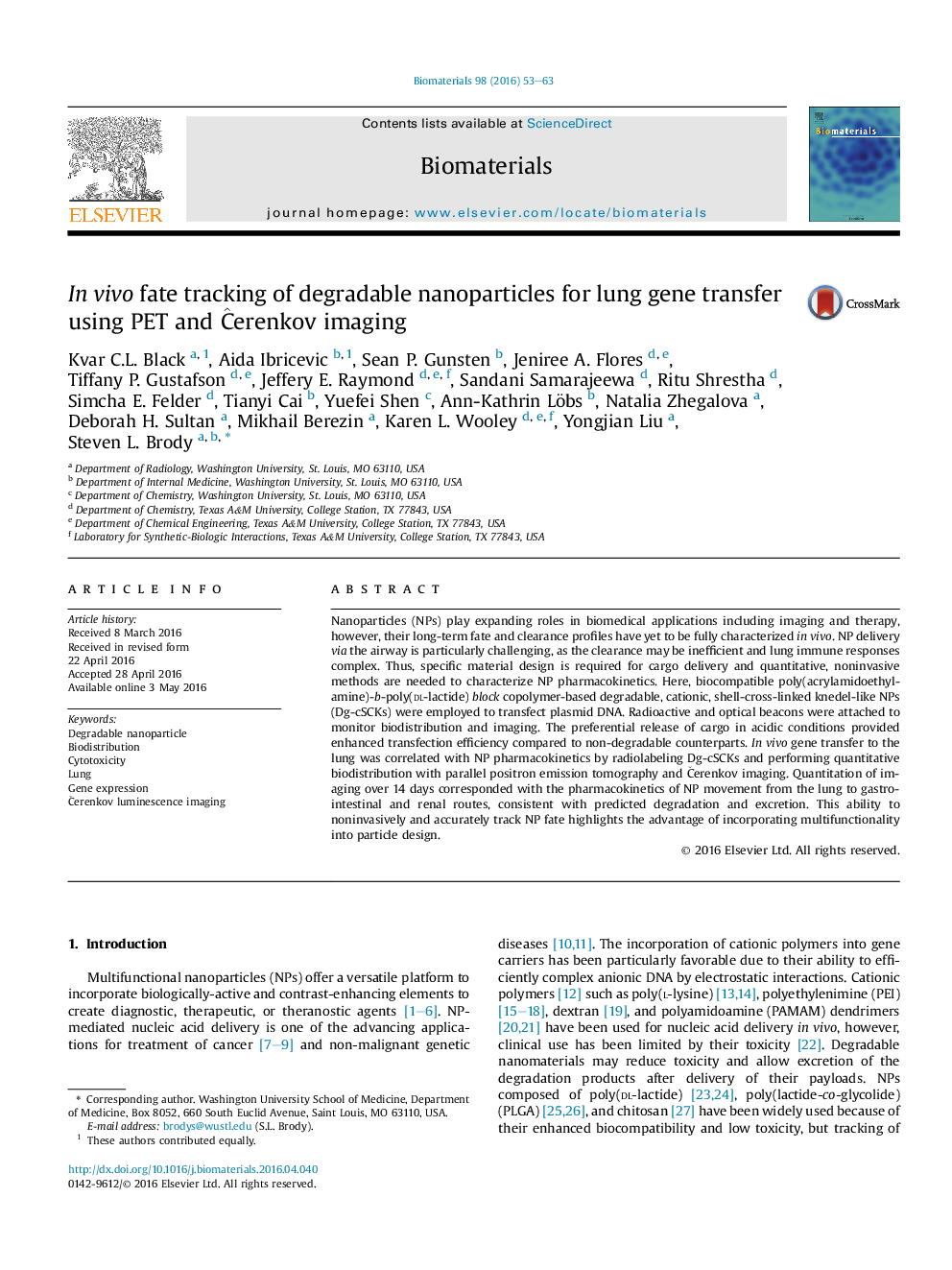| Article ID | Journal | Published Year | Pages | File Type |
|---|---|---|---|---|
| 6484965 | Biomaterials | 2016 | 11 Pages |
Abstract
Nanoparticles (NPs) play expanding roles in biomedical applications including imaging and therapy, however, their long-term fate and clearance profiles have yet to be fully characterized in vivo. NP delivery via the airway is particularly challenging, as the clearance may be inefficient and lung immune responses complex. Thus, specific material design is required for cargo delivery and quantitative, noninvasive methods are needed to characterize NP pharmacokinetics. Here, biocompatible poly(acrylamidoethylamine)-b-poly(dl-lactide) block copolymer-based degradable, cationic, shell-cross-linked knedel-like NPs (Dg-cSCKs) were employed to transfect plasmid DNA. Radioactive and optical beacons were attached to monitor biodistribution and imaging. The preferential release of cargo in acidic conditions provided enhanced transfection efficiency compared to non-degradable counterparts. In vivo gene transfer to the lung was correlated with NP pharmacokinetics by radiolabeling Dg-cSCKs and performing quantitative biodistribution with parallel positron emission tomography and Äerenkov imaging. Quantitation of imaging over 14 days corresponded with the pharmacokinetics of NP movement from the lung to gastrointestinal and renal routes, consistent with predicted degradation and excretion. This ability to noninvasively and accurately track NP fate highlights the advantage of incorporating multifunctionality into particle design.
Related Topics
Physical Sciences and Engineering
Chemical Engineering
Bioengineering
Authors
Kvar C.L. Black, Aida Ibricevic, Sean P. Gunsten, Jeniree A. Flores, Tiffany P. Gustafson, Jeffery E. Raymond, Sandani Samarajeewa, Ritu Shrestha, Simcha E. Felder, Tianyi Cai, Yuefei Shen, Ann-Kathrin Löbs, Natalia Zhegalova, Deborah H. Sultan,
